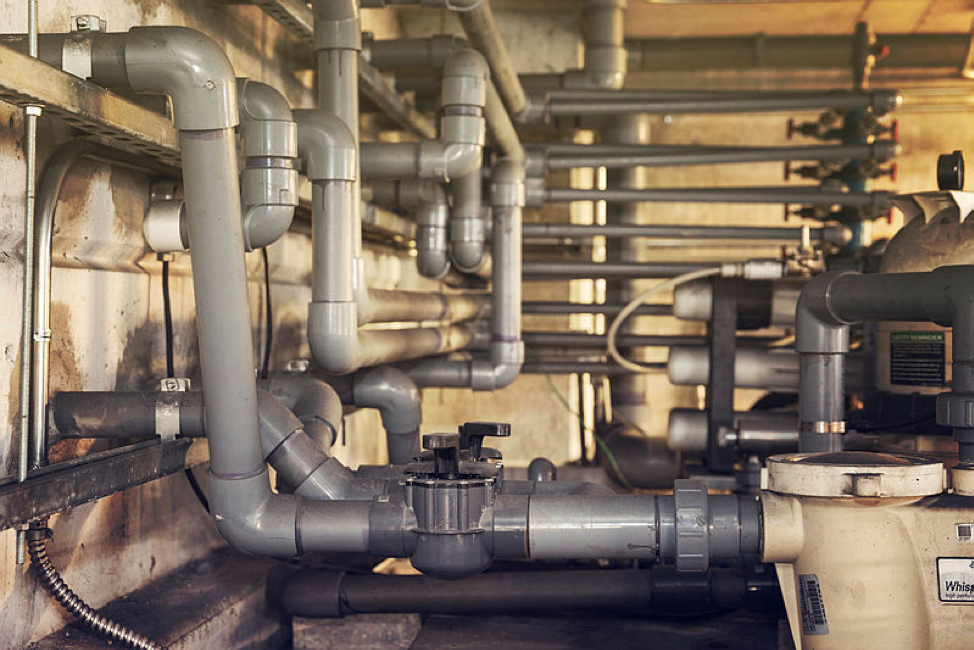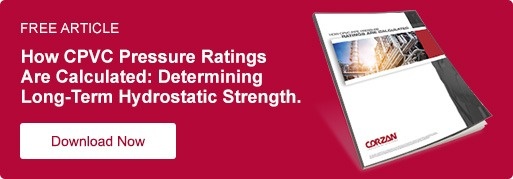UNDERSTANDING SURGE PRESSURES IN PIPING SYSTEMS
A surge in pressure within a piping system, known as water or fluid hammer, occurs whenever the linear flow rate of fluid in pipe changes quickly – when pumps start or stop, valves open or close with quick acting actuation devices, or entrapped air moves within the system. The longer the pipe line and the faster the fluid is moving, the greater potential for shock.
Surges in pressure place stress on piping materials and joints and can cause physical movement of the piping system. Engineering designs must incorporate controls that can maintain surge pressures within the piping system’s capabilities and eliminate or minimize physical motion of the system. It is very possible to have surge pressures twice as high as normal operating pressure. Long term performance of the piping system can be affected by repetitive shock waves, potentially resulting in leaks and other costly damage.
Some surge pressure problems result from poor piping system design – no matter what material is used for the system. Reducing the pipe size too quickly, for example, can result in surge pressure issues. The system may include 8-inch pipe when entering a tee and reduce down to two 3-inch pipes coming out of the tee. This type of situation creates a surge pressure inside the tee as the fluid has to greatly increase in linear velocity to push the same volume flow rate through a smaller cross-sectional flow area.
Different materials perform differently in surge pressure situations depending upon their strength and elasticity. Understanding the material used in a piping system and designing the system to regulate pressure and fluid flow velocities according to its capabilities are important for the system’s long-term performance. Proper sizing of pipe throughout the system, regulation of the speed with which valves and pumps actuate, and incorporation of surge dampening devices can limit the impact of hydraulic shock and keep the total system pressure within the design parameters.
Calculating Surge Pressure
Designers and engineers can control some factors relative to surge pressure – such as pipe diameter and fluid velocity – while factors such as fluid properties are based on the application. Engineers may use the following equation to calculate a piping system’s maximum surge pressure:
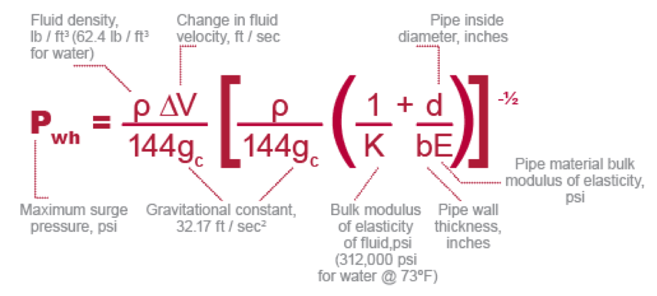
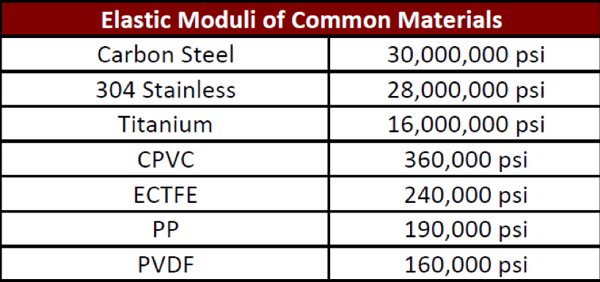
Surge pressure should always be calculated as an addition to the system’s operating pressure. The combined surge pressure and operating pressure must never exceed 1.5 times the system’s maximum working pressure.
The values in the tables linked below are based on the above formula at 73°F and the assumption that water flowing at a given rate of gallons per minute will suddenly and completely stop. The surge pressure is approximately 15 percent less at 180°F. Values for fluids other than water may be calculated by multiplying the square root of the fluid’s specific gravity.
The tables that follow show carrying capacity and friction loss for Schedule 80 piping and include both independent and dependent variables.
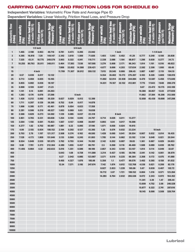 Carrying Capacity and Friction Loss for Schedule 80 Corzan CPVC Pipe (PDF)
Carrying Capacity and Friction Loss for Schedule 80 Corzan CPVC Pipe (PDF)
Designing to Minimize Surge Pressure
Engineers have several options when designing piping systems to help minimize the negative impact of surge pressure. Properly sizing pipes, for example, is the most effective way to control fluid velocity. The larger the pipe diameter, the slower the fluid velocity for a given volumetric flow rate. This variable should be adjusted to maintain the required flow rate while keeping surge pressure below 1.5 times the piping material’s maximum working pressure.
Linear fluid flow velocity within a piping system should generally be limited to 5 ft/s for industrial applications, especially for pipes six inches or larger. Air should never be allowed to accumulate in the system while it is operating. During start up, the fluid velocity within the system should be limited to 1 ft/s while filling or until all air has been flushed out and the pressure brought up to operating conditions. In addition, pumps should never be allowed to draw in air.
Extra protective equipment may be used to prevent surge pressure or water hammer in pipes. Such equipment might include pressure relief valves, shock absorbers, surge arrestors and air vacuum relief valves. Fast-acting valves should always be regulated to help prevent hydraulic shock.
Combining Quality Piping and Proper Design for Reliable, Long-Term Performance
Excessive surge pressure places added stress on materials and joints and can fatigue the system to the point of failure over time. Different materials perform differently in surge pressure situations depending upon their strength and elasticity, which is why it is important to understand the material that will be used for the piping system and properly design the system to avoid costly surge pressure issues.
When properly designed and installed, a Corzan CPVC piping system will provide years of reliable and productive service with minimal life-cycle costs. With over 60 years of proven success in a range of challenging industrial environments, Corzan CPVC offers an excellent balance of properties to meet specific application needs.
Learn more about Corzan CPVC piping and how to minimize surge pressure in industrial applications. Contact a Corzan Piping System Consultant or a partner manufacturer for a free consultation.
Details for this blog were taken in part from the following resources:
https://www.corzan.com/en-us/piping-systems/specification/fluid-handling
https://www.corzan.com/blog/how-to-optimize-a-piping-system-to-protect-against-surge-pressure-damage
http://www.corzan.com/hubfs/Corzan%20CPVC%20Engineering%20Design%20Manual.pdf?t=1500573170875
